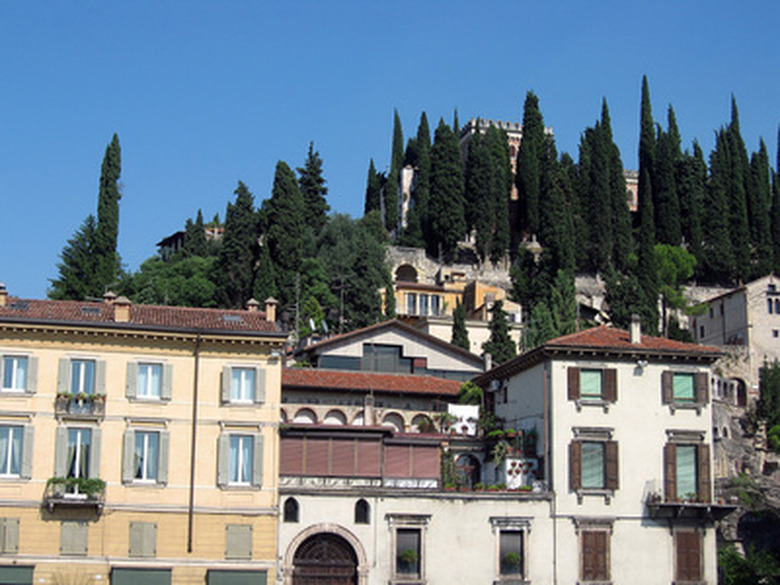Italian Cypress Varieties
An essental plant for any classical, Mediterranean-themed landscape, the Italian cypress (Cupressus sempervirens) bears small rounded cones that are aromatic when crushed. It grows best in hot summer climates with cool, moist winters, and will be rather short-lived or look poor in areas of high humidity. Grow this 40- to 60-foot tall tree in U.S. Department of Agriculture hardiness zones 7 through 9, 10 in dry-summer locations.
Glauca
Also called the blue Italian cypress, 'Glauca' develops a column-like shape maturing to 50 to 60 feet tall and 5 to 10 feet wide. Its short, wispy foliage is blue-green .
Stricta
Sometimes labeled as 'Fastigiata' and commonly called the columnar Italian cypress, 'Stricta' bears deeper olive-green foliage on fused and flattened branches. It matures to 60 feet tall and 5 to 10 feet wide.
- An essental plant for any classical, Mediterranean-themed landscape, the Italian cypress (Cupressus sempervirens) bears small rounded cones that are aromatic when crushed.
- Also called the blue Italian cypress, 'Glauca' develops a column-like shape maturing to 50 to 60 feet tall and 5 to 10 feet wide.
Swain's Gold
'Swain's Gold' is slower growing than other varieties, but sets itself apart ornamentally with its gold-tipped yellow-green foliage. This tree has a narrowly pointed shape and growing tip, reaching a maximum height of 20 to 30 feet with a base width of 3 to 4 feet.
Tiny Tower
If you are short on vertical or horizontal space, consider the densely growing selection 'Tiny Tower.' Even slower growing than 'Swain's Gold,' it reaches a height of 10 to 12 feet after 20 years of age, with a spread of 3 feet. Its needles display a deep bluish-green hue.
Horizontalis
Perhaps not a legitimate variety name, 'Horizontalis' is loosely assigned to more broadly-branching wild forms of the species, or seed-grown trees that came from narrow-shaped parents trees like 'Stricta' or 'Glauca.' The name "horizontalis" may be a remnant name once assigned to some Italian cypresses that taxonomists once believed to be a natural form variant.
- 'Swain's Gold' is slower growing than other varieties, but sets itself apart ornamentally with its gold-tipped yellow-green foliage.
- Perhaps not a legitimate variety name, 'Horizontalis' is loosely assigned to more broadly-branching wild forms of the species, or seed-grown trees that came from narrow-shaped parents trees like 'Stricta' or 'Glauca.'
References
- "Sunset Western Garden Book;" Kathleen Norris Brenzel, ed.; 2007
- The Gymnosperm Database: Cupressus sempervirens
- "Dirr's Trees and Shrubs for Warm Climates;" Michael A. Dirr; 2002
